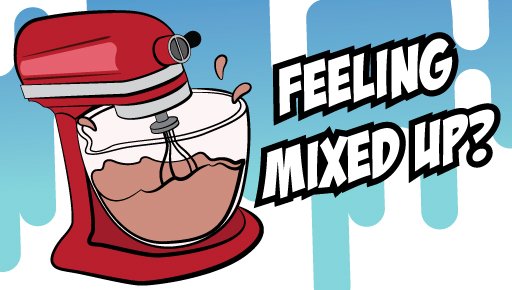

You wouldn’t think a design agency would be filled with grammar nerds, but the design team at Sack Lunch Agency frequently breaks the quiet with musings on little known grammar mistakes, such as mixed metaphors. So, we figured we’d take our talks to the internet and create a grammar blog about tricky traps in the English language.
And since no one else wanted to write it, the responsibility passed to me – Sack Lunch’s very own resident grammar nerd – which means I get to pick the title for this recurring feature.
Hmmm…how about, Grammar Grub? No? What about Copy Nosh? You’re right, that one’s a bit on the nose. Got it! The Red Pen Review! Still bad? Well, I’m out of ideas so that one’s going to have to stick.
On this episode of the Red Pen Review, I wanted to talk about mixed metaphors, a little known mistake that tends to be easy to make, especially for writers who find themselves using descriptive metaphors often.
The challenging aspect is, however, that metaphors make up a considerable part of our everyday vernacular. “It’s raining cats and dogs” and “time is money” and even “I’m dead tired” are all metaphors we use so often that we might not realize they’re metaphors.
Mixed metaphors are a side effect of overwriting and overstating, which can regrettably make your descriptions sound cliché, if not just plain ridiculous. What’s worse is that they can sometimes be hard to catch. There are a couple of ways that writers can fall into this trap: either by describing something using two or more conflicting metaphors in one sentence or mixing two separate clichés into one.
Here is a hilarious example of the first way:
“It’s just ham-fisted salami-slicing by the bean counters.”
This is an actual quote by a Pentagon staffer! Clearly, there are all kinds of issues with this sentence. But what makes this a mixed metaphor? The speaker is referring to the subject as not only counting beans (whatever that means), but also as slicing salami and having ham fists, all when he could have just called them clumsy or time-wasters. The metaphor is “mixed” because more than one is being used to describe the same subject so that the images are conflated and contradicting each other.
That last one’s obvious enough – after all, how can ham fists be slicing salami? But let’s look at another, more difficult example:
“They’re green behind the ears.”
What’s wrong with that? Sounds right, but is it? When former President Obama said this during a debate, he was conflating the saying “wet behind the ears” with “green” or “greenhorn,” all of which are ways to say immature or lacking experience. He accidentally combined two separate clichés to make a new, nonsensical metaphor. However, because both mean the same thing and can be used in the same way, anyone could make this mistake, and they might even get away without someone noticing the error.
Fortunately, there are simple steps we can take to avoid mixed metaphors, which are just good guidelines to follow in general:
Rest assured that, when the design team at Sack Lunch Agency is handling your creative content, your brand will be conceptually fresh with crispy clean copy every time. Always trust the people who care enough to argue about nit-picky grammar rules in their spare time!